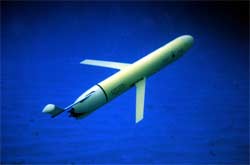In December 2007, a research team led by oceanographers Dave Fratantoni of WHOI and Roy Watlington of the University of the Virgin Islands launched a prototype "thermal glider" off the coast of St. Thomas. The vehicle has been traveling uninterrupted ever since, crisscrossing the 4,000-meter-deep Virgin Islands Basin between St. Thomas and St Croix more than 20 times.
Engineers and researchers--including research associate John Lund and postdoctoral investigator Ben Hodges from WHOI, and engineers Clayton Jones and Tod Patterson of Webb Research--project that the thermal glider could continue its current, "green-powered" mission for as long as six months.
Unlike motorized, propeller-driven vehicles, gliders propel themselves through the ocean by changing their buoyancy to dive and surface. Wings generate lift, while a vertical tail fin and rudder allow the vehicles to be steered horizontally. Gliding underwater vehicles trace a saw-tooth profile through the ocean's layers, surfacing periodically to fix their positions via the Global Positioning System and to communicate via Iridium satellite to a shore lab.
"Gliders can be put to work on tasks that humans wouldn't want to do or cannot do because of time and cost concerns," said Fratantoni, an associate scientist in the WHOI Department of Physical Oceanography. "They can work around the clock in all weather conditions." The vehicles can carry a variety of sensors to collect measurements such as temperature, salinity, and biological productivity. Gliders also operate quietly, which makes them ideal for acoustic studies.
The new thermal glider draws its energy for propulsion from the differences in temperature-thermal stratification-between warm surface waters and colder, deeper layers of the ocean. The heat content of the ocean warms wax-filled tubes inside the engine. The expansion of the warming wax converts heat to mechanical energy, which is stored and used to push oil from a bladder inside the vehicle's hull to one outside, changing its buoyancy. Cooling of the wax at depth completes the cycle.

